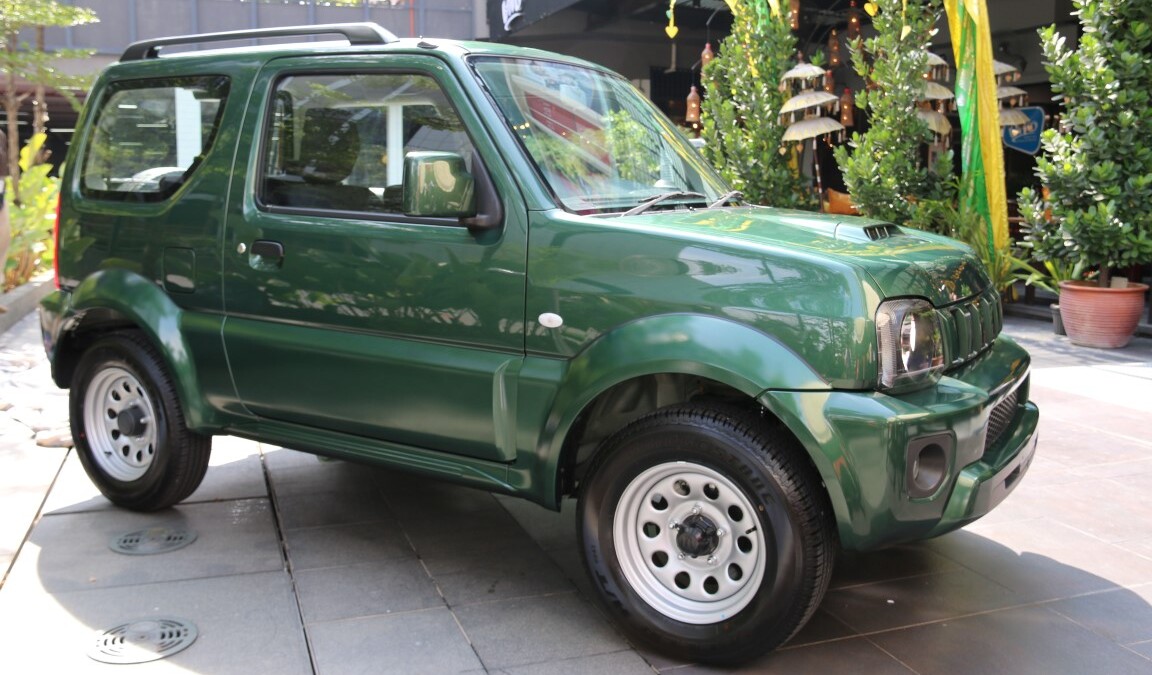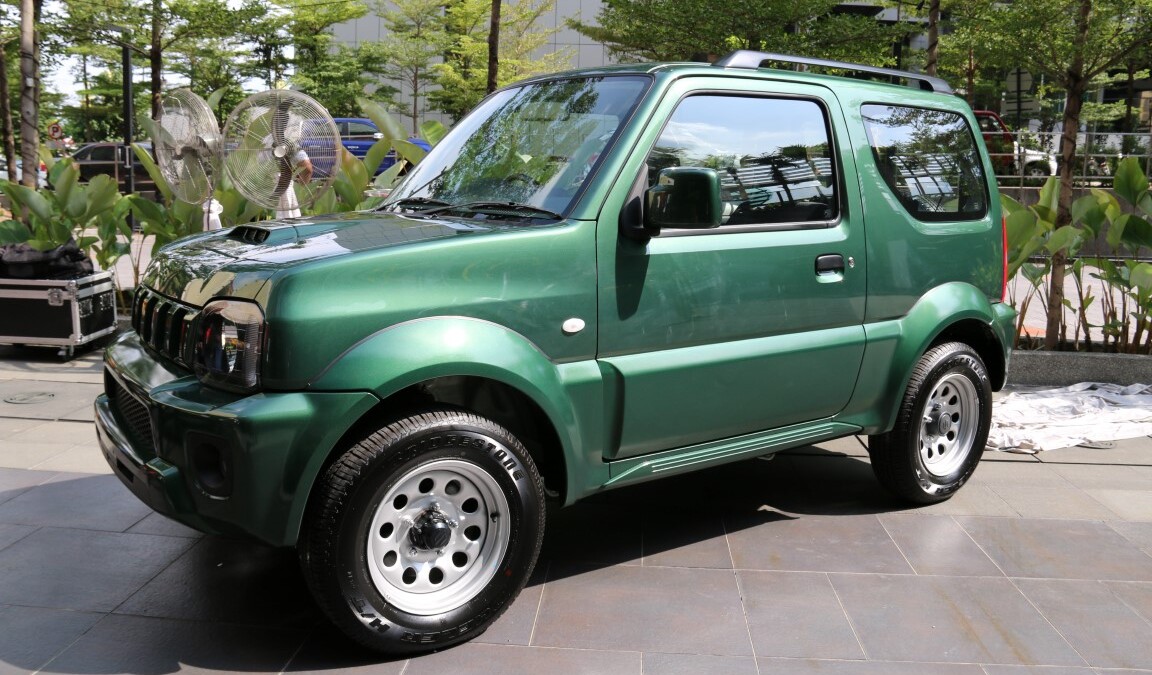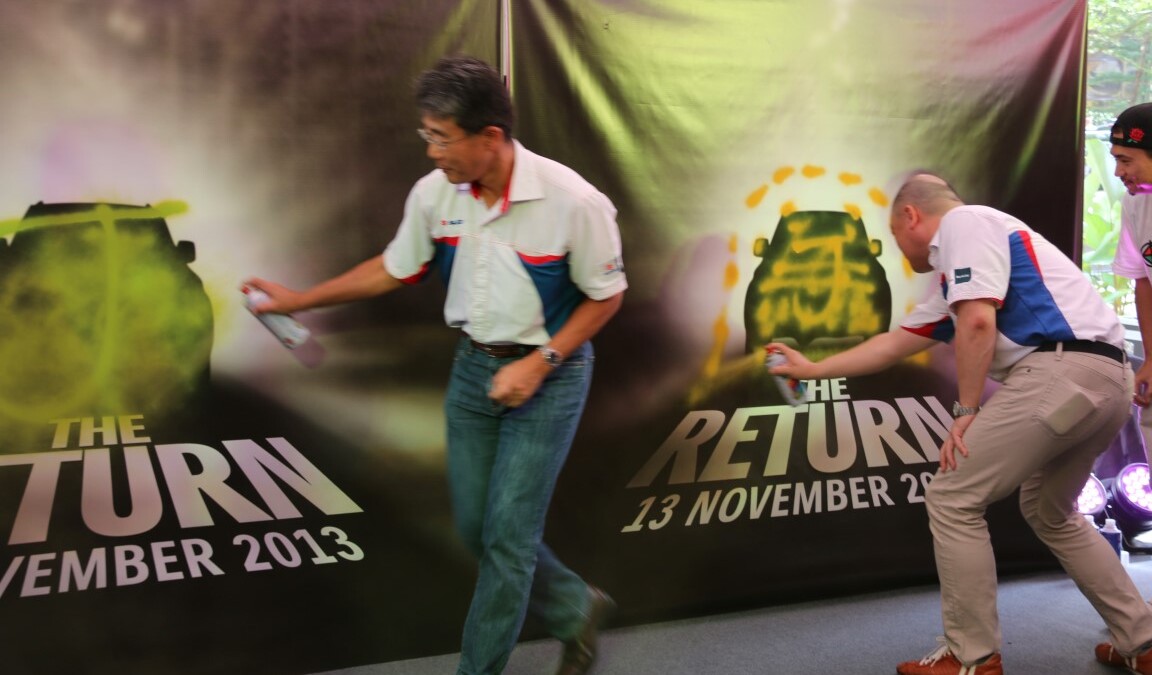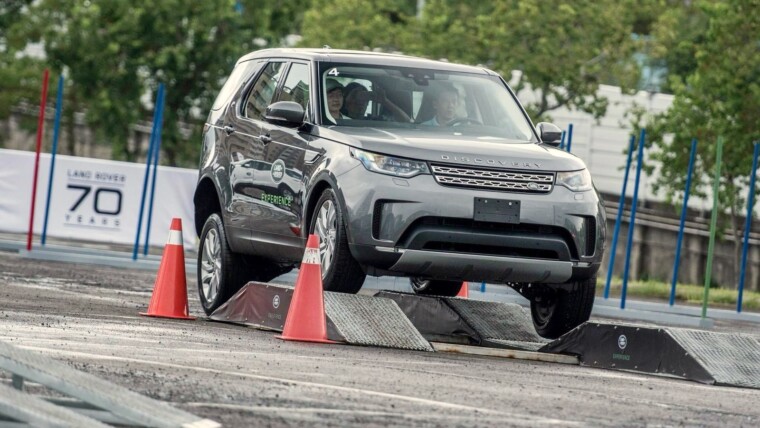
The iconic Suzuki Jimny, the small, durable and unpretentious 4×4 that served Malaysians for many years, has made a return to the Malaysian market after the last Jimny rolled out from the Malaysia assembly plant 13 years ago. The new compact 4WD was recently launched by Suzuki Malaysia Automobile at Empire Subang. The compact 4WD market was stagnant for many years ever since the Perodua Kembara was discontinued and the Perodua Nautica failed to make an impact.
The third generation Jimny, debuted worldwide in 1998, incorporates subtle changes in the cosmetic department but with an added muscular appearance and practical design that the Jimny was well known for. One variant of the new Jimny will be introduced and powered by a smooth-revving and economical 1.3L M13A DOHC engine and mated with the choice of 5-speed manual gearbox or 4-speed automatic gearbox. It is also equipped with the Drive Action 4×4 system, capable of shifting from 2WD to 4WD via a touch of a button. Safety has not been overlooked with features such as dual SRS airbags, ABS, EBD and BA coming standard.

The adage of “If it ain’t broke, don’t fix it” pretty much describes most of the Japanese vehicles and this one is no exception. The new Jimny sports a simple compact design with a strong emphasis on reliability and durability rather than raw power, size or technology, which is usually associated with modern 4WD vehicles. This also translates to the fact that the Jimny is able to handle city maneuvering as well as handling tough and rough terrains, which its predecessor was famous for.

Available on four colors; Silky Silver Metallic, Superior White, Prime Ever Green and Metallic Quasar Gray, the new Jimny starts at RM87,305.50 for the manual and RM92,435.50 or the automatic, both inclusive of insurance and road tax. The steep pricing for a small 4×4 is a given, considering that the new Jimny is fully imported from Japan and subject to the Malaysian automotive tax rates for 4X4 vehicles. Suzuki Malaysia expects to sell 1,000 units per annum and may consider a possible return to local assembly depending on demand.
Other posts by AF Newsdesk

















